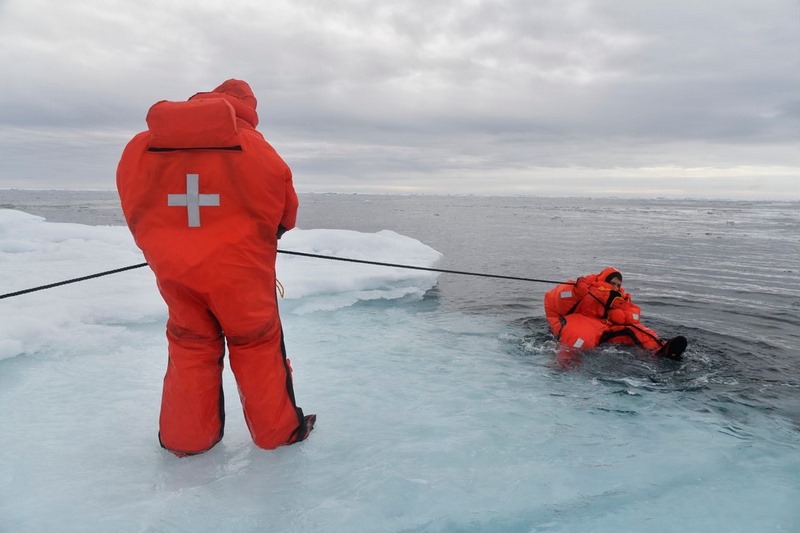When it comes to survival equipment, White Glacier wants to offer next-level protection for colder weather regions.
The company has developed a unique product, the Arctic 10+, which was designed for cold-weather survival, CEO Diego Jacobson said.
“There’s a gap between the Polar Code, which says you have to be able to survive on ice for at least five days, and the Life-Saving Appliances Code, which mandates a regular emergency suit,” he told Cruise Industry News.
Materials currently being used by the vessels operating in polar regions like the Arctic cannot guarantee acceptable survival conditions in extreme cold weather, he explained.
“The people that are issuing the Polar Certificates, which allow the vessels to operate in Arctic waters, do so because the ships have nylon blankets, sleeping bags, or parkas. In reality, it can’t achieve the clo factor that you need,” Jacobsen said, mentioning a unit that is used to measure the thermal insulation capacity of clothing.
Coined in 1942, the term clo is used to refer to the amount of insulation that allows a person to maintain thermal equilibrium while resting at 21ºC and is usually used to measure the warmth of a clothing article.
In 2023, a new ISO standard specified how much clo must be offered by survival equipment in different scenarios, he said.
“There was no other solution in the market before we came up with our suits, which can easily comply with it. Other materials cannot guarantee the necessary clo factor,” he claimed.
With experience supplying various militaries, Jacobson founded White Glacier in Puerto Rico in 2014.
“I have an extensive background as a military contractor with the U.S. Government since 1988 that includes manufacturing highly complex labor-intensive items to the highest quality for the Army, Navy and Air Force in mass production,” he said.
The company started designing an immersion suit to try to resolve all the problems that it found with the suits that were then available on the market.
A first version of the survival product was certified by relevant authorities and regulators in 2016, but the final product ended up a little too bulky and big, he explained.
In 2017, after receiving a call from Ponant, White Glacier started to work on a second version of the product.
“They were building an icebreaker cruise ship, and they wanted our suit. They said that they loved it, but it was a bit too bulky, so they asked what we could do to make it smaller and lighter,” he added.
Jacobson then returned to the drawing board before coming out with the current version of the product, the Arctic 10+, six months later.
The immersion suit eventually made its way to the 2021-built Le Commandant Charcot, and White Glacier tested the product along with Ponant in the North Pole.
“We learned a lot from the experience; we took the feedback and incorporated it into the suit,” Jacobson said, noting that one of the changes was the addition of boots with additional thermal protection for feet.
Described as a polar survival suit, the equipment offers protection from hypothermia for more than 12 hours in water temperatures below 2ºC.
Moving away from the standard neoprene materials that are used by the industry, the Arctic 10+ uses a different technology that is said to create tremendous warmth.
The suit offers a series of additional features, including a unique splash tent, which is described as a protective film that is released from the abdomen and behind the neck to create a fully enclosed environment.
According to Jacobson, the feature creates a “personal habitat” that protects from the wind, the rain and the water.
“It allows the person to breathe warm air in the Arctic too. All of that is important because water ingress makes thermal protection drop by 40 to 45 percent,” he explained.
The suit is also equipped with internal pockets for food, survival equipment, light and even a urination kit.
Another highlight of the product is its buoyancy, Jacobson said, noting that accidents with ships tend to happen in adverse weather conditions.
“With other suits you are floating in the water. We have good buoyancy, so you can float above the waves,” he continued, adding that White Glacier is in the process of educating the market about its product.
“Accidents do happen in the Arctic. People need to be aware that, unless they have the right protection, they are being exposed to danger.”




